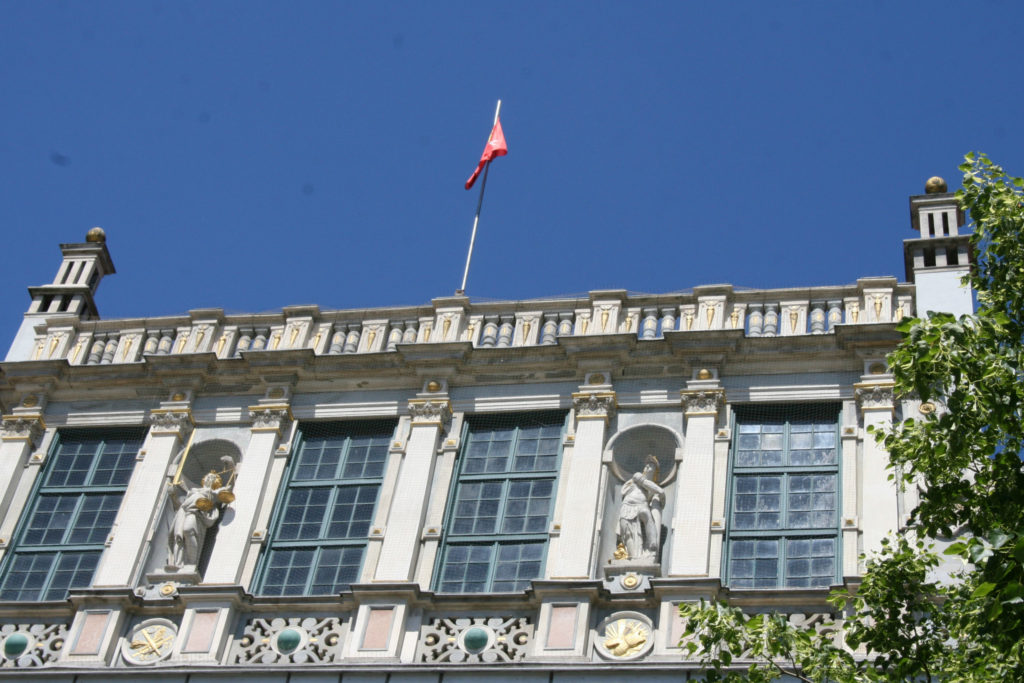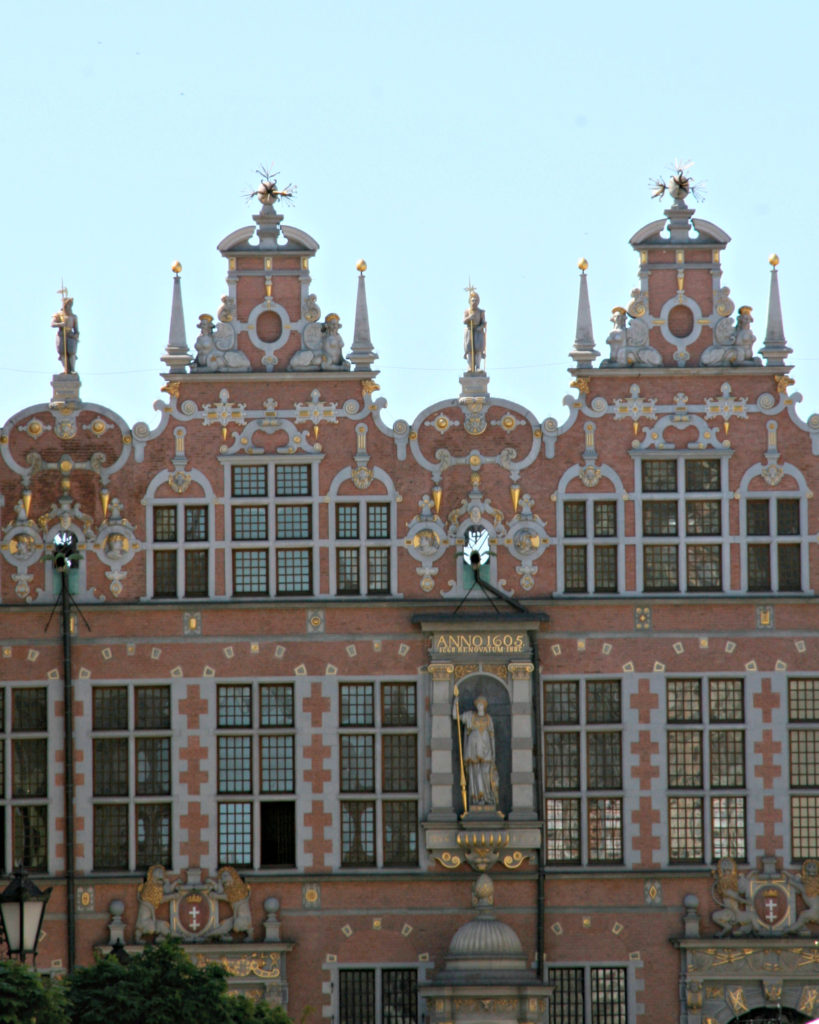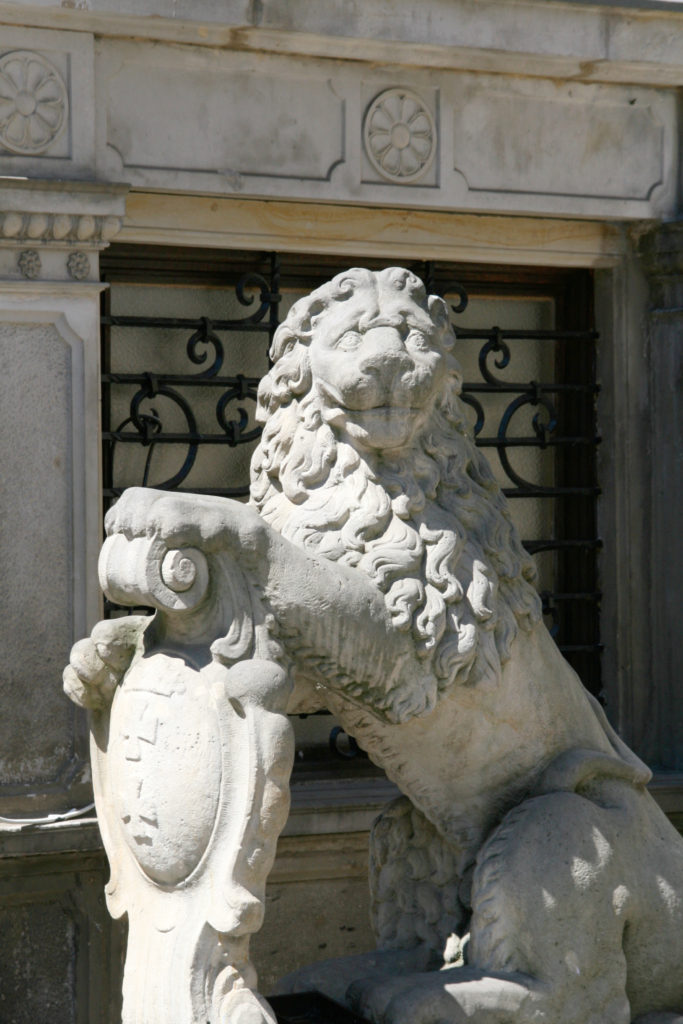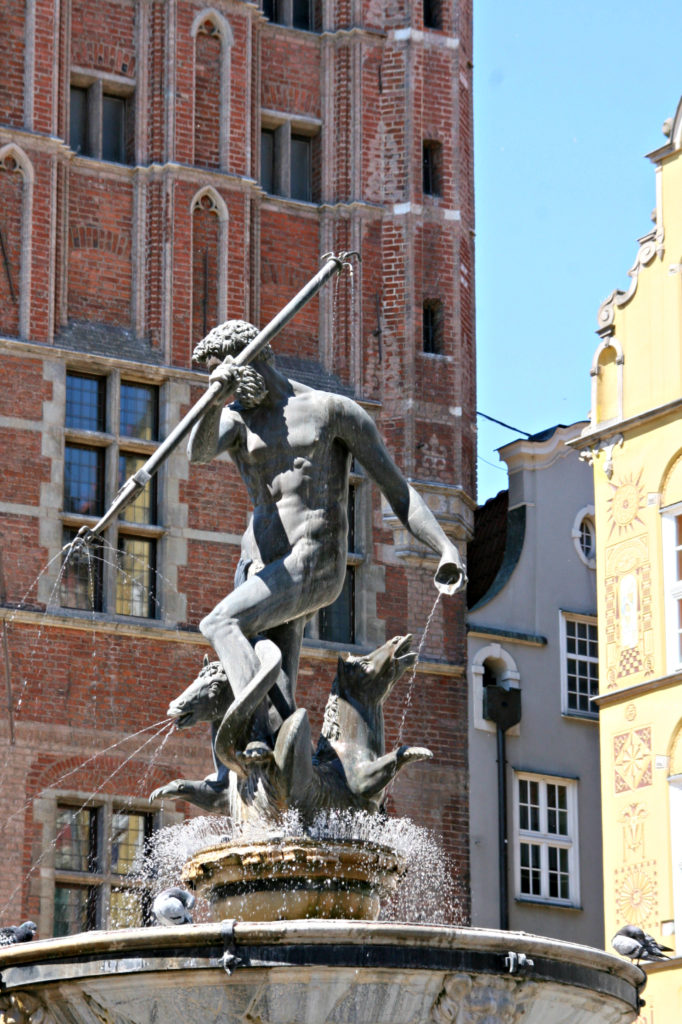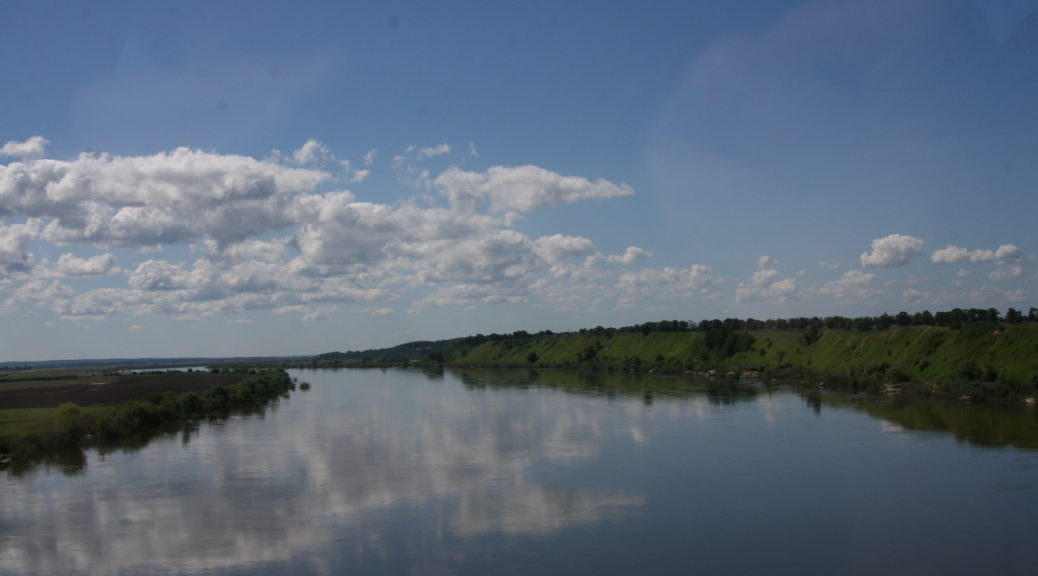
Gdansk, Poland
After leaving Estonia, we sailed to Gdynia, Poland. It was from here we left with others from our cruise ship to visit Malbork Castle which was the focus of my last post. In this entry, I am going to tell you about the time we spent in Gdansk which is about twelve miles from the port city of Gdynia.
Gdansk is a major seaport of Poland and has a very busy harbor. After World War II, Poland was part of the Soviet Bloc which ultimately ended after the Solidarity Trade Union used civil resistance to pressure change and free elections. There was a heavy military presence in the harbor when we visited – our guide told us this was because the people of Poland still distrust Russia.
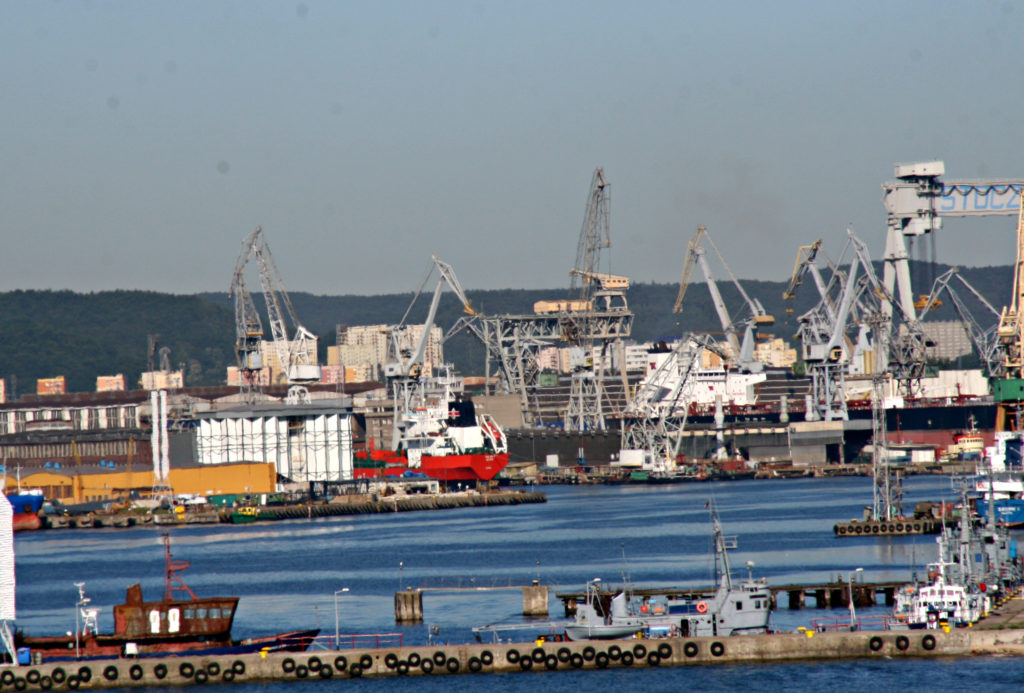
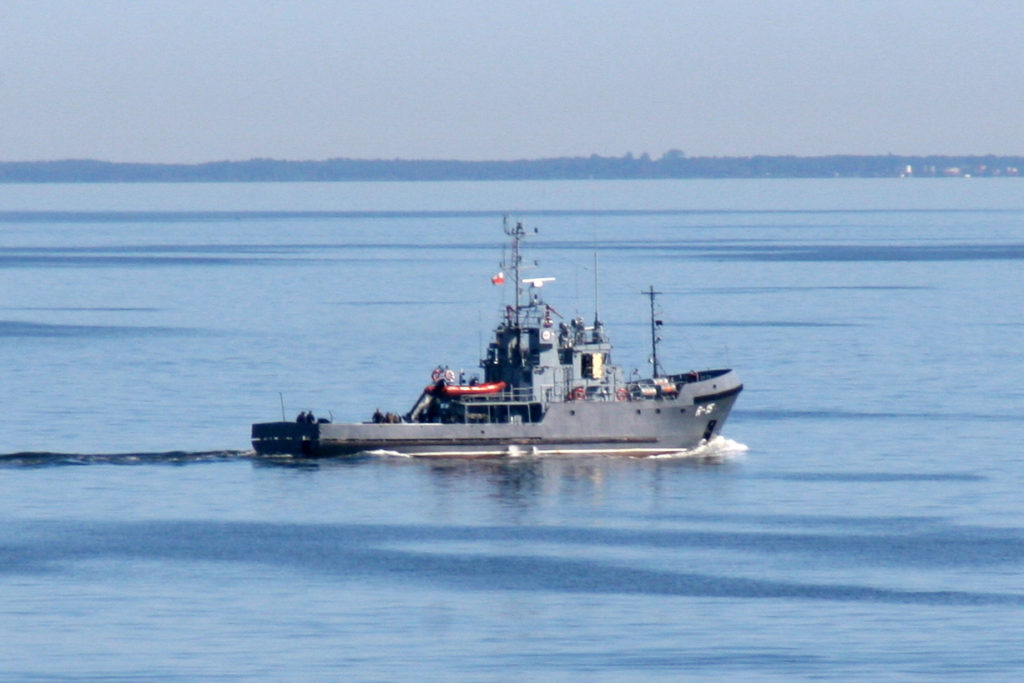
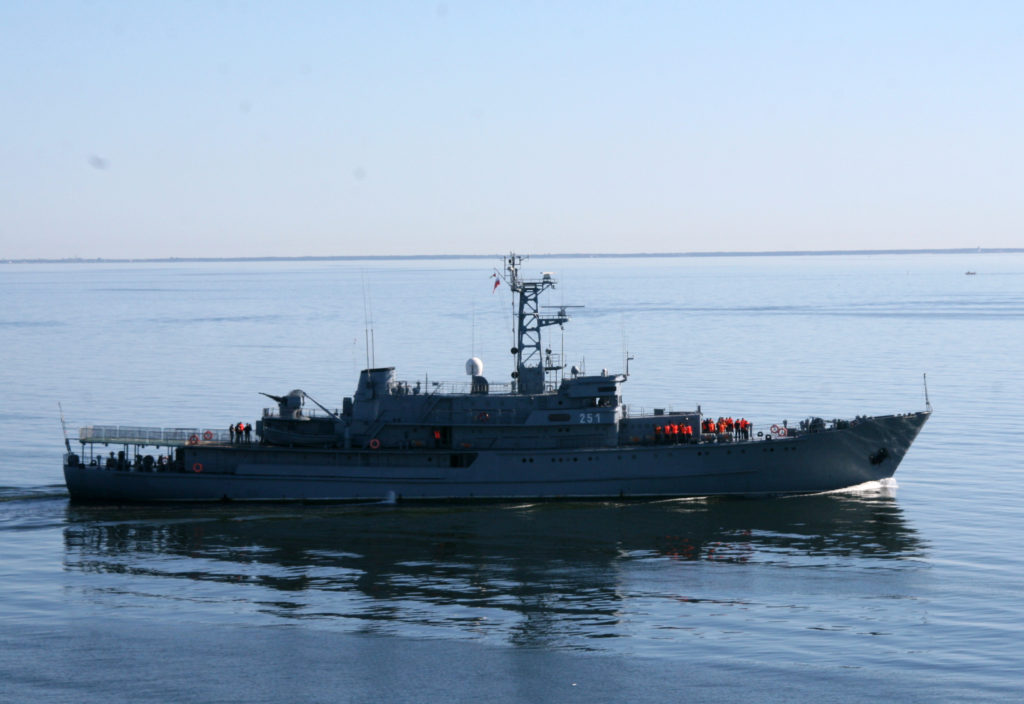
The first record of Gdansk was in 997AD. It had been an important trading post and later the harbor where Polish goods would be transported to other countries. It was ruled by the Teutonic Knights (see previous post on the Malbork Castle) during the 14th Century and then became a free city under the protection of Poland in the mid 1400’s. In the 17th Century, it was ruled by several countries. It was part of Germany until 1919 when it was again a free city. Hitler attacked the city which eventually led to World War II. About 90% of the city was destroyed during the war but has been carefully restored.
As noted above, the people of Gdansk played an important part of Poland becoming a free nation. Poland was part of the Eastern Bloc under control of the Soviets after World War II. In 1970, demonstrations were held in Gdansk against the Communist government because of a sudden rise in food costs. The police responded with several killed and many more injured. There were strikes and more protests in 1980. Lech Welesa was an electrician in the Lenin Shipyards (now the Gdansk Shipyards). Welesa negotiated a settlement for the shipyard workers. He was asked by strikers in other industries to continue his strike out of solidarity. He agreed and is credited with founding the Solidarity Trade Union which became the first independent trade union in a Soviet-bloc country. The strikes and non-violent protests ultimately led to the end of the Cold War and Poland’s freedom. Lech Welesa was awarded the Nobel Peace Prize in 1983 and would later become the President of Poland (1990 to 1995).
As we traveled from Malbork Castle to Gdansk, we saw beautiful farm country, some of it seemingly decorated with corn poppy, the national flower of Poland. We also crossed the Third Millennium John Paul II Bridge which stretches over the Martwa Wisla River. It is a cable bridge completed in 2001 and has an inverted “Y” to which the cables are attached. The fourth picture is of Poland’s second largest oil refinery which processes and sells petroleum products in Europe.
The last two pictures were taken in Gdansk. The first of these two is a picture of the Old Town of Gdansk as seen from the Motlawa River. The blue arrow points out a structure known as The Crane. It has an interesting story which I have reprinted below.
The Crane is one of the defining symbols of Gdańsk and represents what little is left of the city’s great trading age. First mentioned in 1367 the original structure burnt down in 1442 before its current design was created in 1442-1444. As a working crane it was used to transfer cargoes and to put up masts on ships. At one time this was the biggest working crane in the world but it also served a defense function and as one of the gates to the city. It had a lifting capacity of 4 tons to a height of 11 meters and this was achieved by two huge wooden wheels at its heart each with a diameter of 6 meters. These wheels were originally powered by men walking inside of them to turn the lifting mechanism. It remained a working crane until the middle of the 19th century and was 80% destroyed in 1945 in the battle for Gdańsk. After the war it was rebuilt and donated to the Polish Maritime Museum of which it remains a part today.
Credit: inyourpocket.com
The last picture is a plaque marking where the office of Lech Welesa was located at the time of our visit (“biuro” is Polish for “office”).
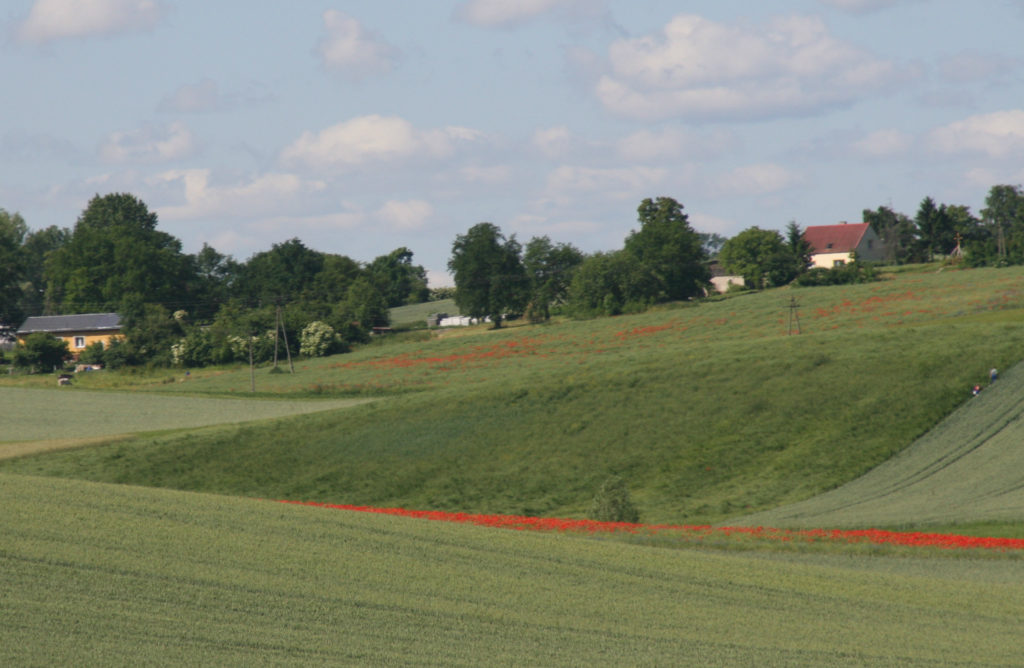
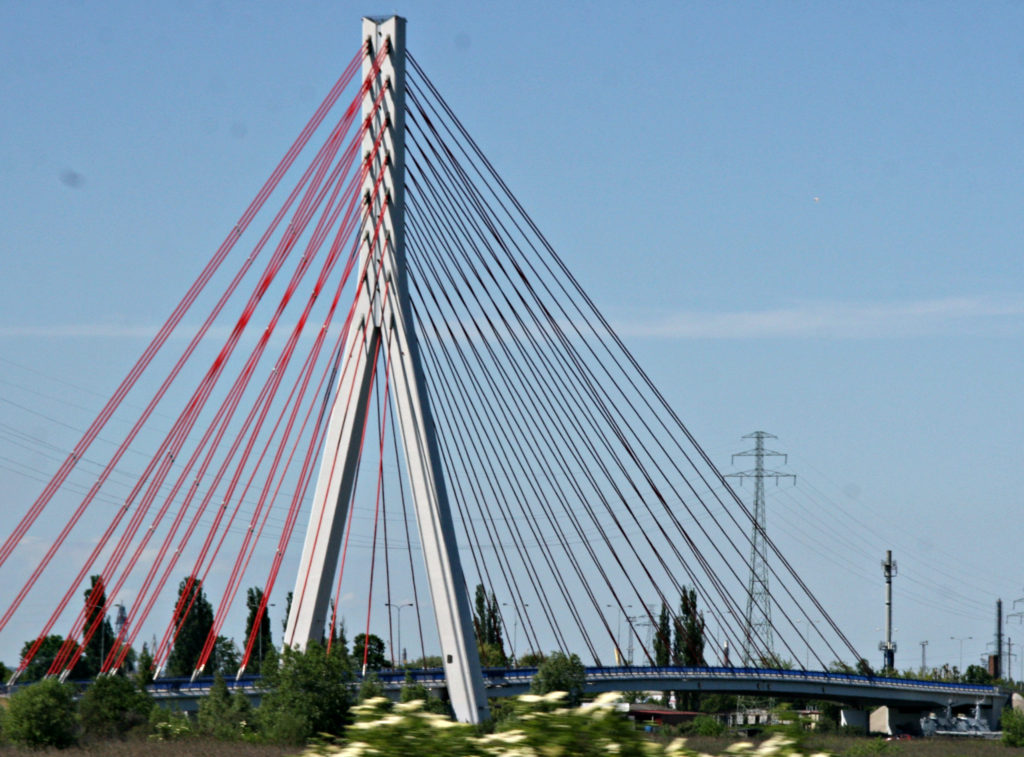
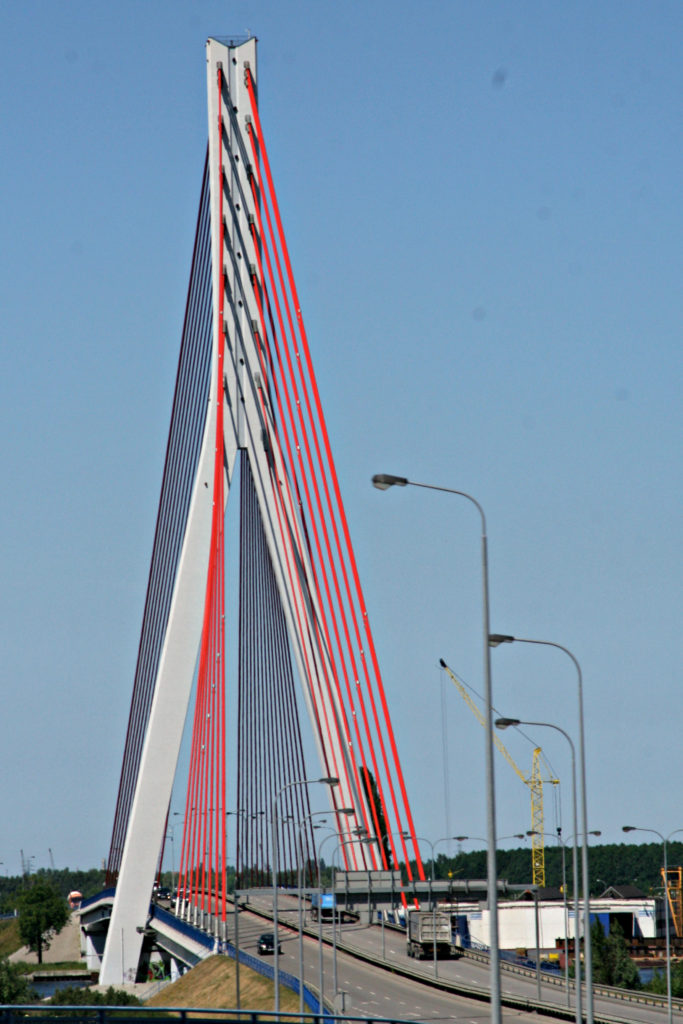
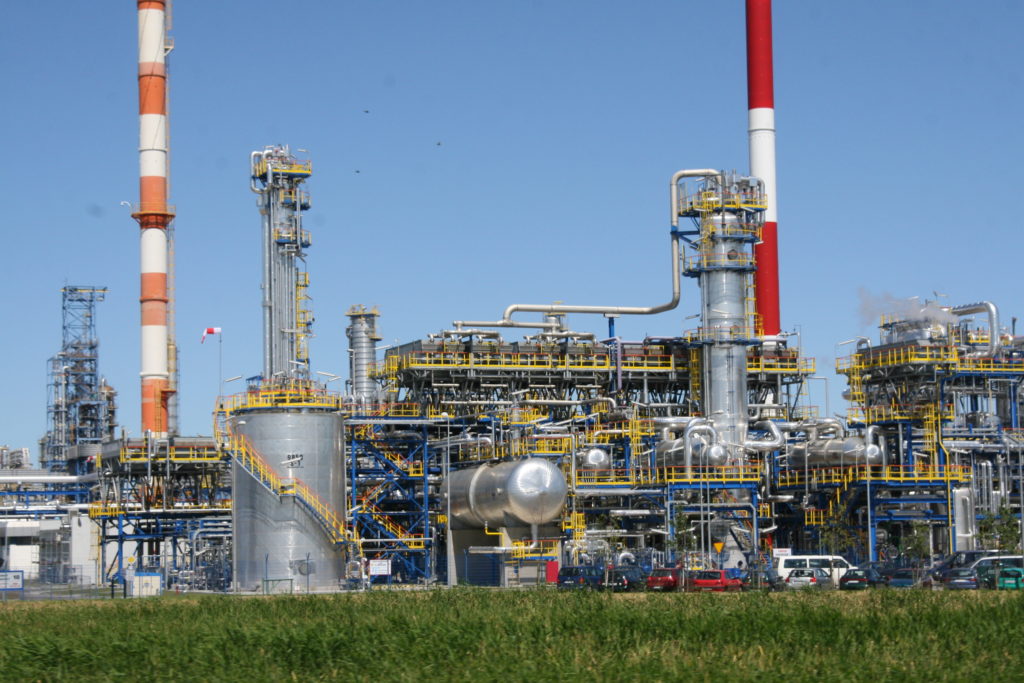
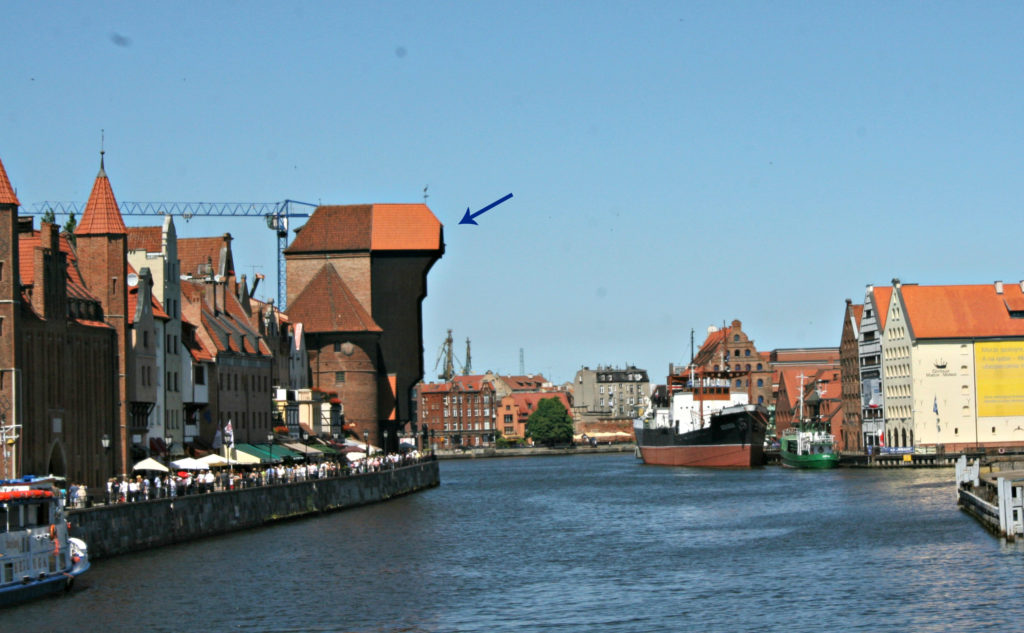
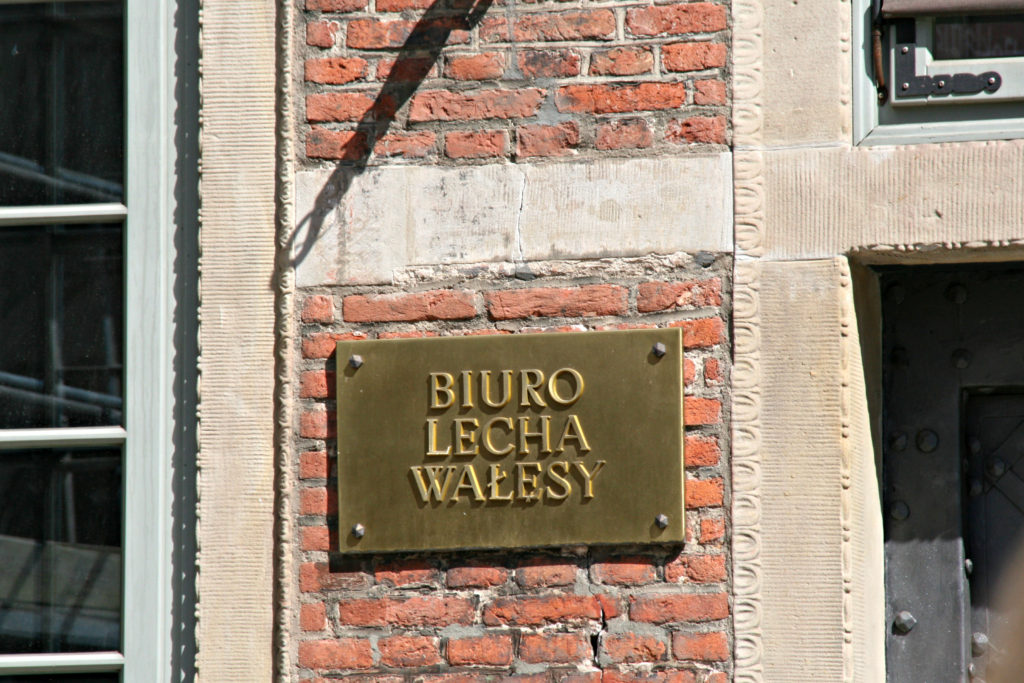
In Gdansk, we visited St. Mary’s Church, which was formerly known as the Basilica of the Assumption of the Blessed Virgin Mary. Originally, there was a wooden church on this site. The foundation stone for the brick church was laid in 1343. Today it is a Catholic Church, although in the 1500’s it held both Catholic and Lutheran services and from the 16th Century to 1945 it was a Lutheran Church. It was badly damaged during World War II, underwent restoration after the war and was reconsecrated in 1955.
St. Mary’s Church is one of the three largest brick churches in the world, able to accommodate 25,000 worshippers. The church has 37 windows, 31 chapels and over 300 tombs. When the Communist government of Poland declared martial law between 1981 and 1983, members of the Solidarity Trade Union sought refuge within the church. The pictures below are of one of the church’s towers, an exterior view of one of the windows, the pulpit, the baldachin over the pulpit, the stained glass window above the altar, and the organ.
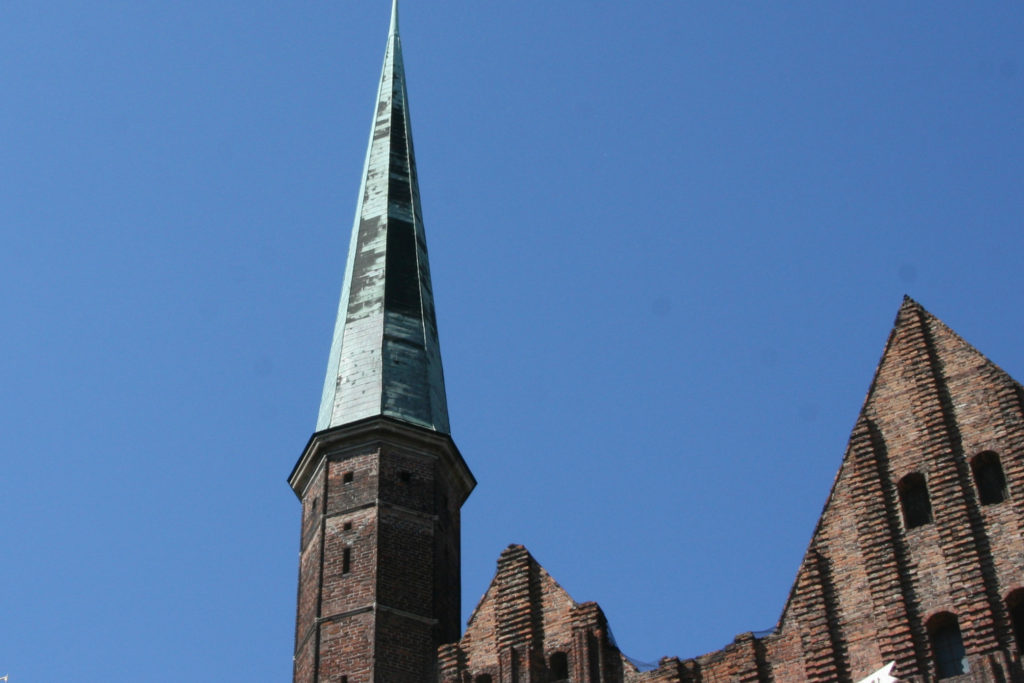
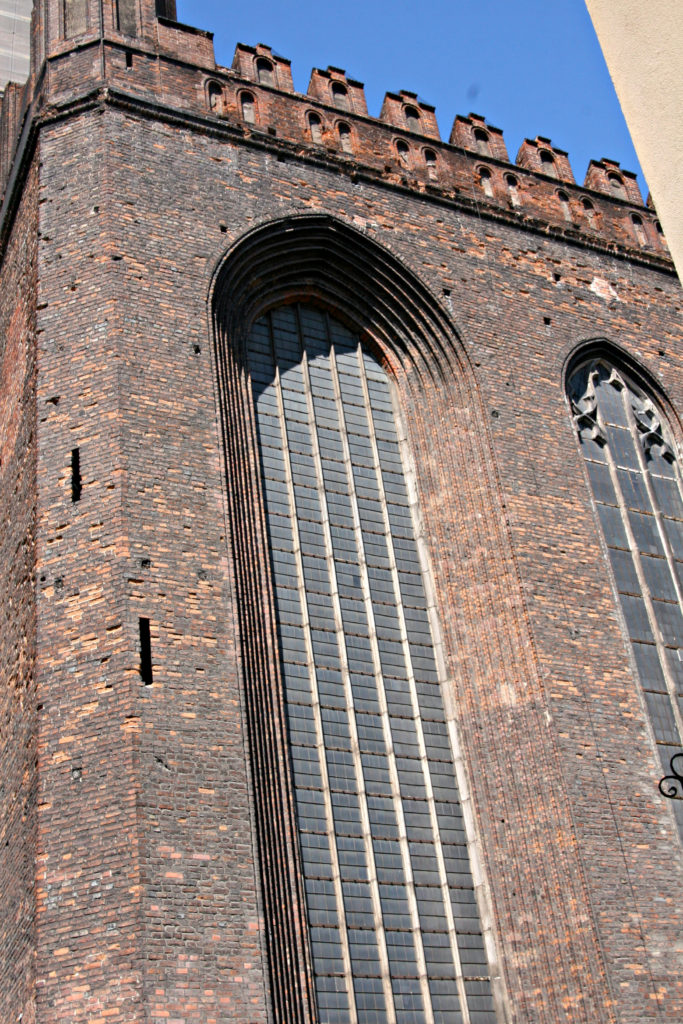
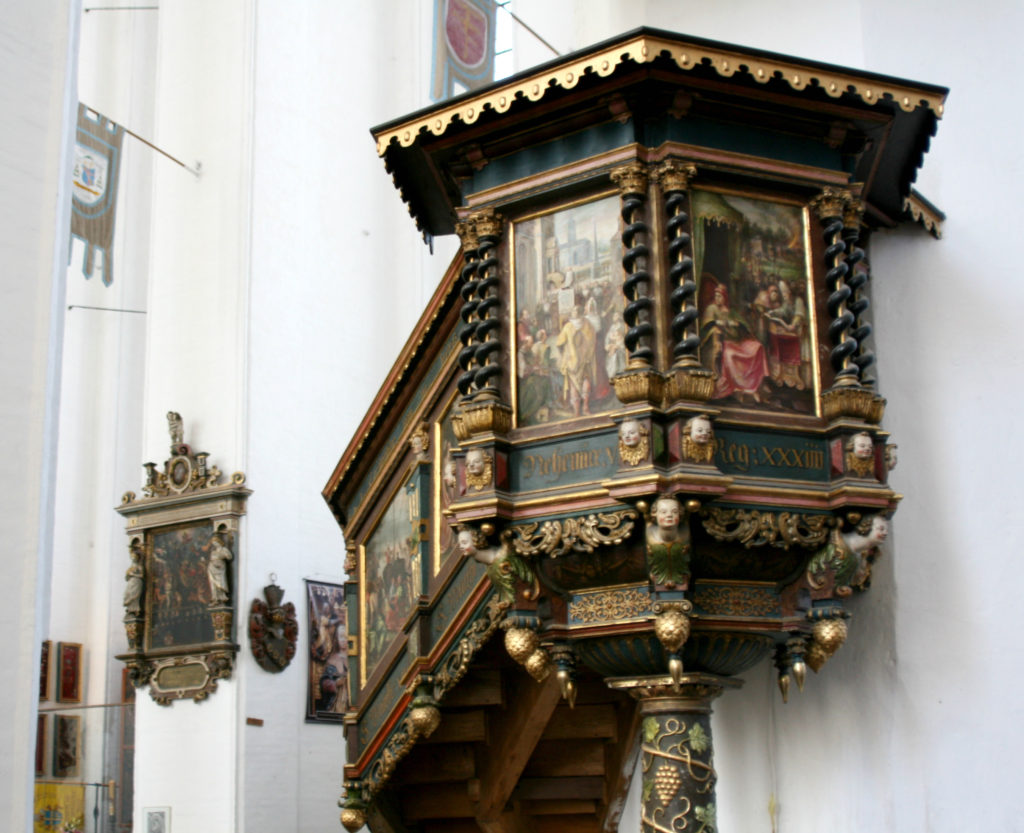
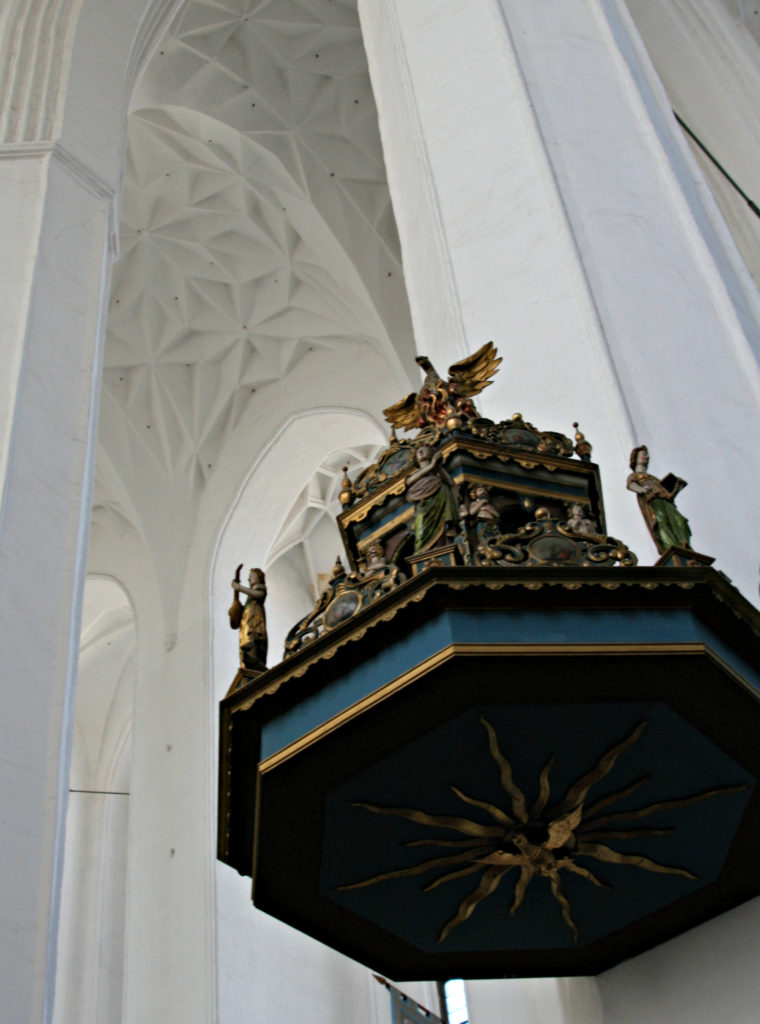
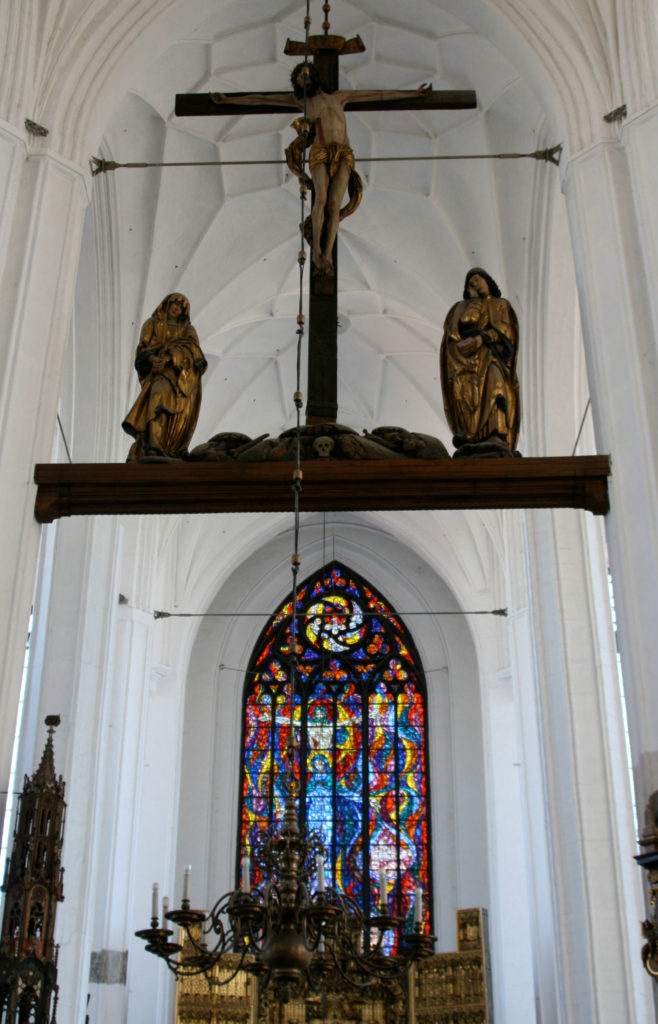
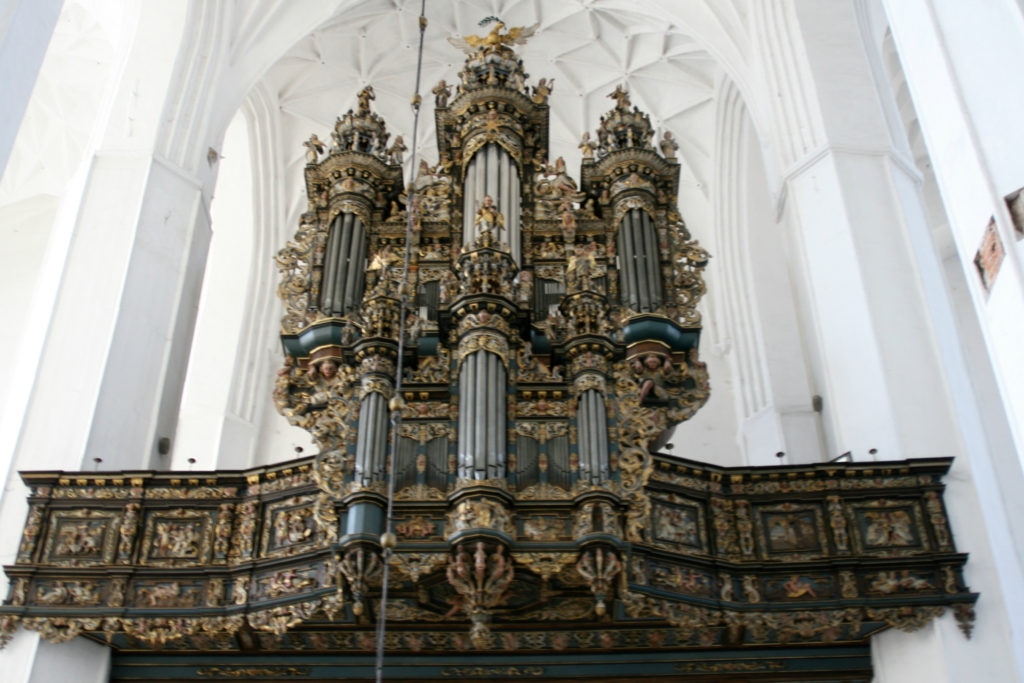
Gdansk has several entrance gates; a picture of the Chlebnicka Gate is immediately below. It was built in 1450 and is made of brick. Its original purpose was for defense. The emblem above the point of the arch is a lily so the gate is also called the Lily Gate. The emblem on the other side is the oldest crest of Gdansk – a shield with two crosses, but no crown. The Motlawa River lies on the other side of the gate.
The next two pictures are of the Green Gate, originally built to serve as the home for Polish monarchs – however no kings have actually lived here. Construction was completed in 1568. Its name comes from a nearby bridge made of stones that are green in color. There are four arched passages through the gate. Today it is part of Poland’s National Museum.
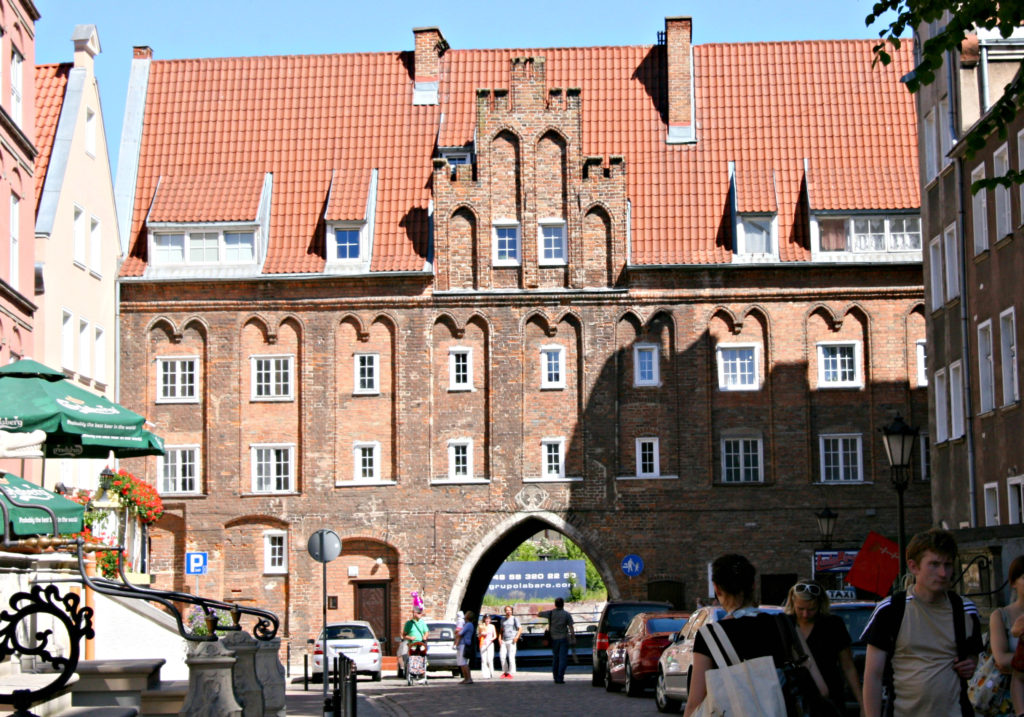
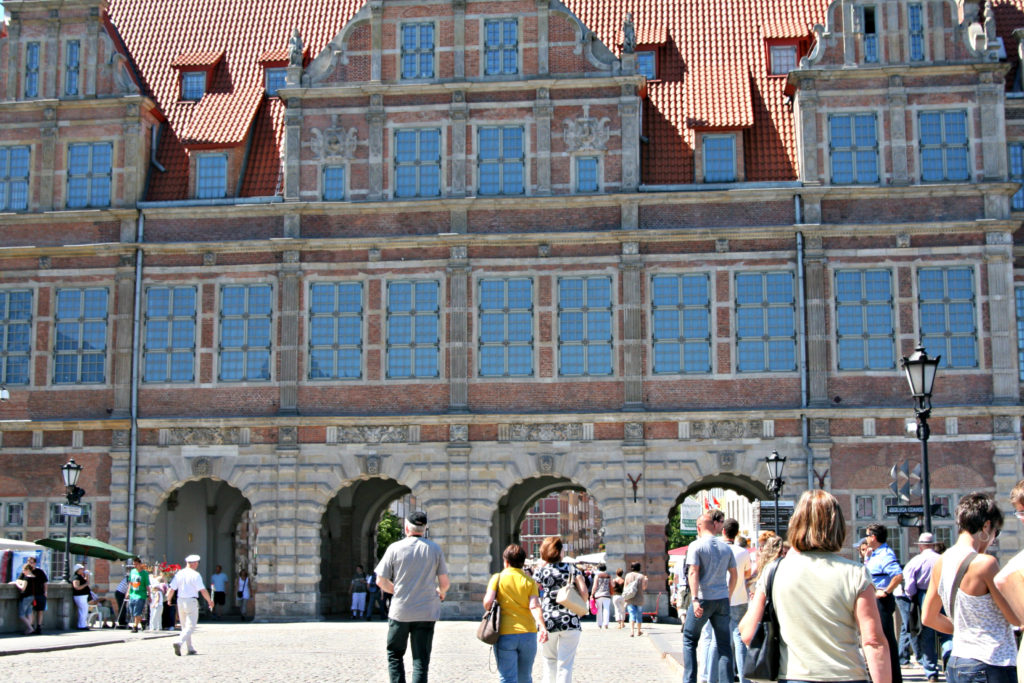
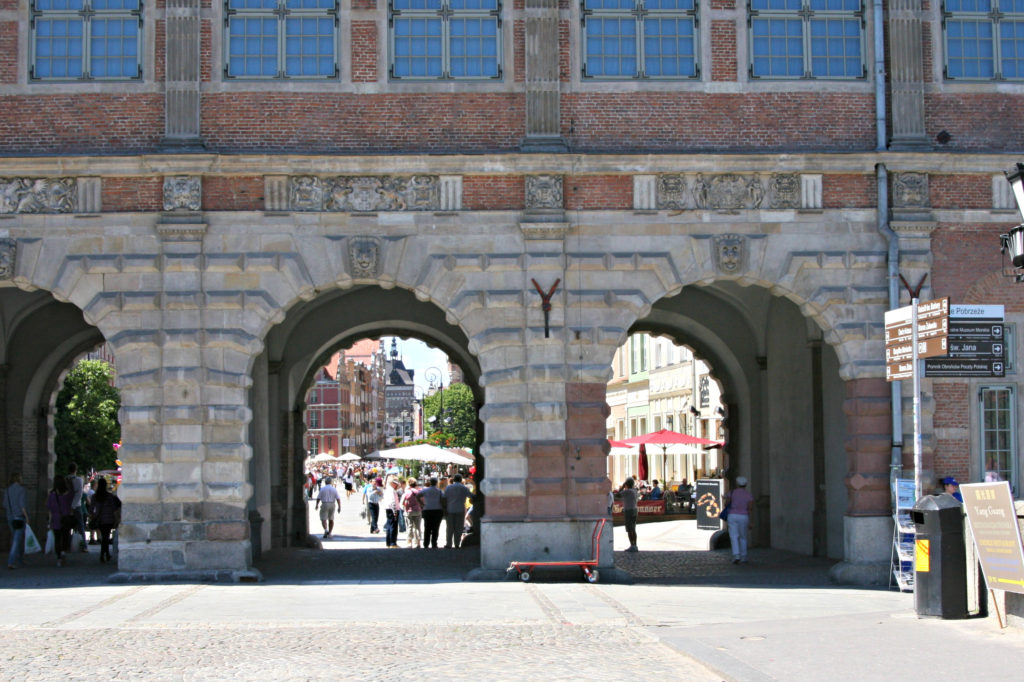
The first picture below is looking through one of the passageways of the Green Gate at the Long Market. The Long Market was established in the 13th Century as a road to a market place. Later the road was where the homes of Gdansk’s most wealthy citizens were located. The next picture in this section is the clock tower of the City Hall. The City Hall was damaged by a fire in the 1500s and then damaged again in World War II. It was repaired and reconstructed with the renovations completed in 1952.
The third picture is of some of the former residences. The last picture is of the Golden House, considered the most ornate of the residences. It was built in the early 1600s for Johann Speymann, a wealthy grain trader and Gdansk’s mayor. The statues on top of the building are of Cleopatra, Oedipus, Achilles, and Antigone.
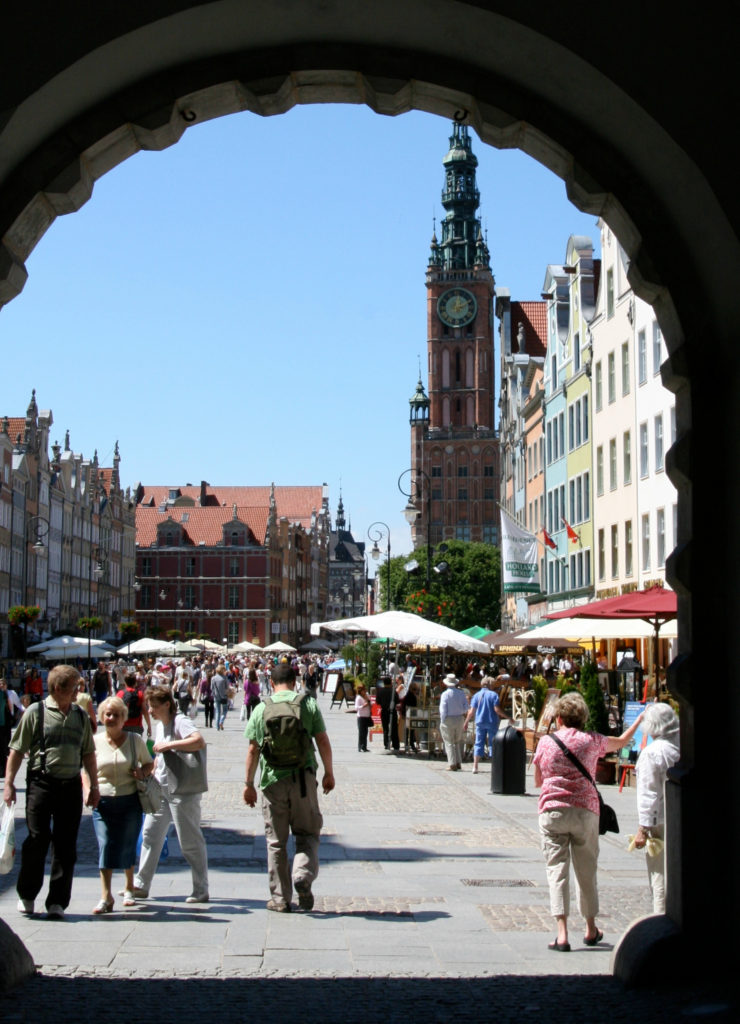
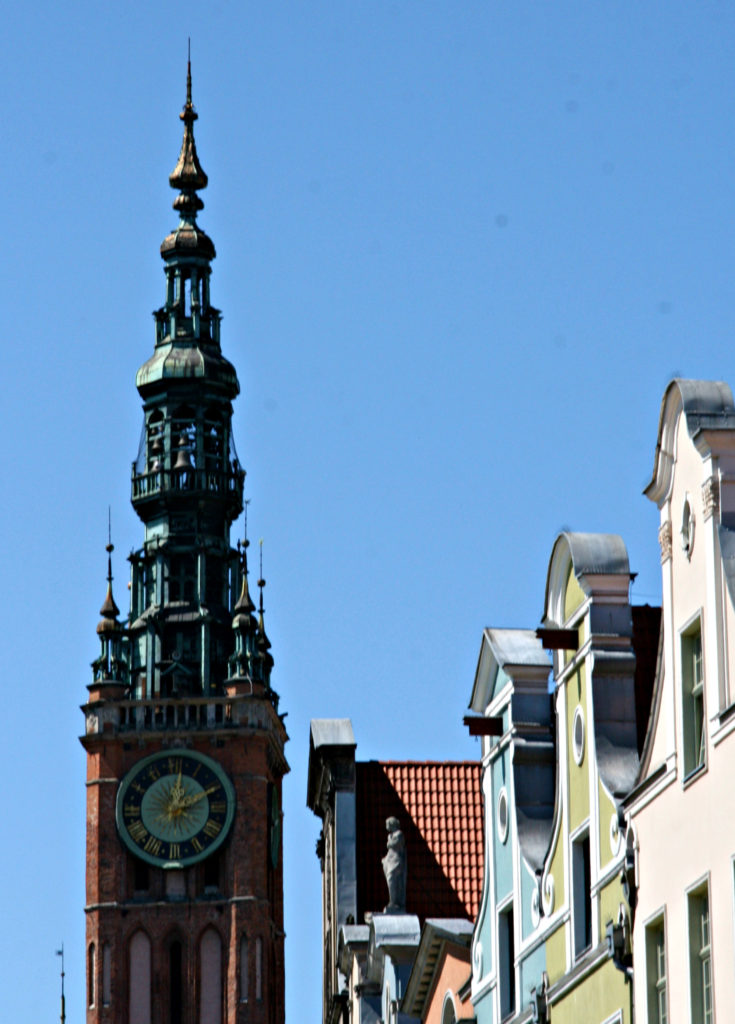
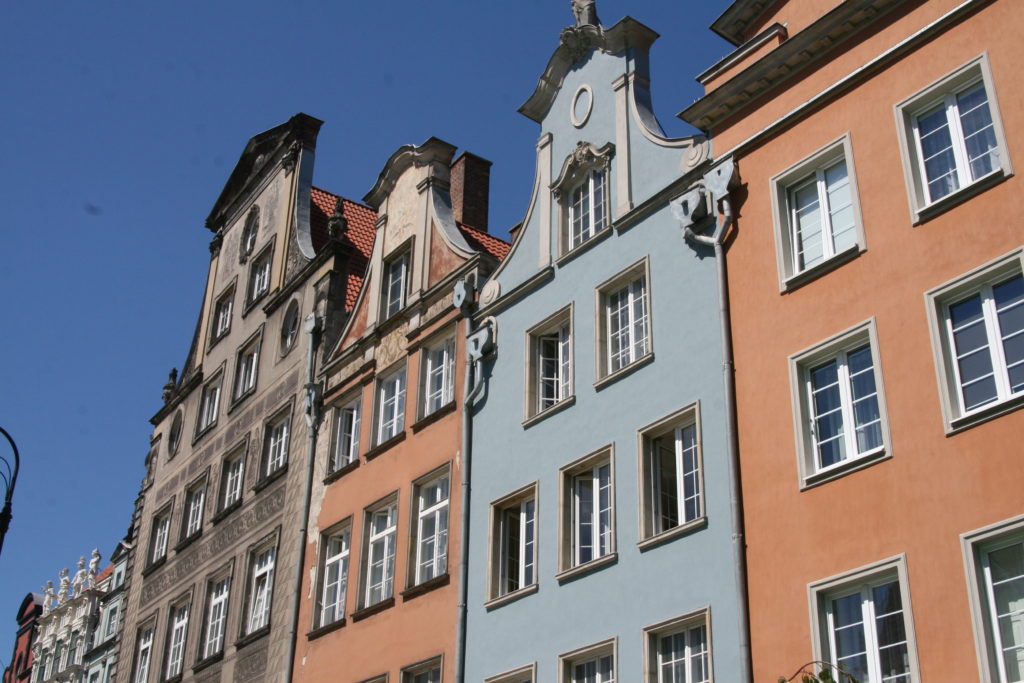
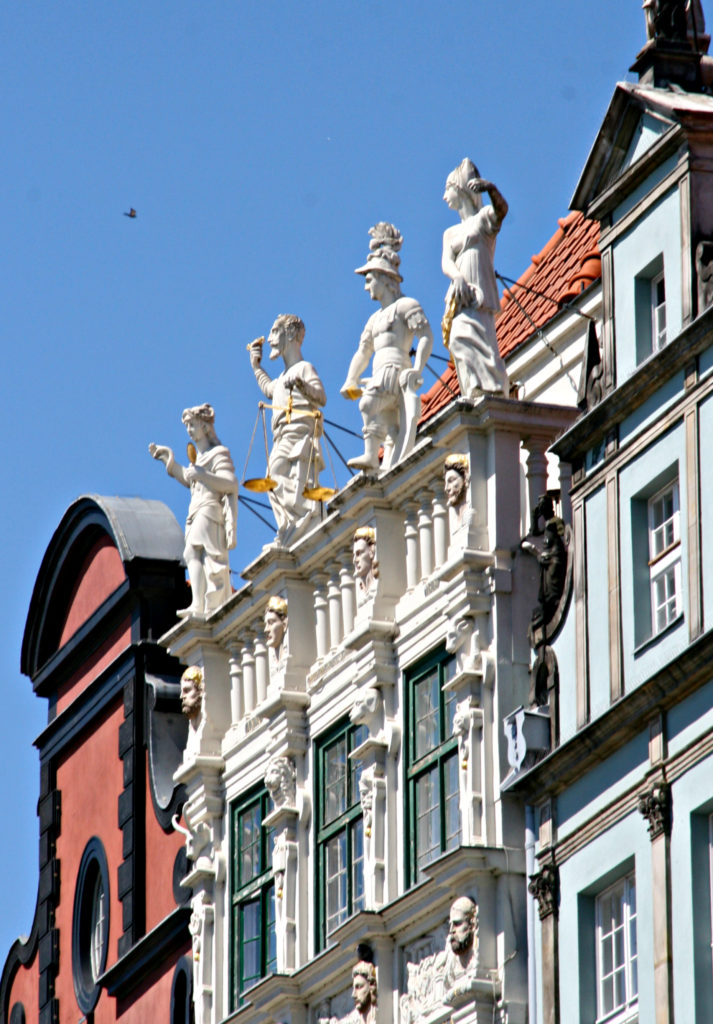
Before concluding this post, I want to share a few more pictures. The first picture below is of Artus Court. Historically, it was the place where wealthy merchants and visitors would meet for drinks, entertainment – and though illegal – sometimes gambling. It is now part of the Gdansk History Museum.
The second picture is the Great Armory, built from 1600 to 1609. There was actually an elevator-like system that could move gunpowder and cannon balls. It was damaged in World War II and then renovated. It now houses an art gallery.
The third picture is a statue of a lion holding the coat of arms of the city of Gdansk. The last picture is of Neptune Fountain in the Long Market. It is a bronze statue of the Roman god of the sea. It was first erected in 1549 and then hidden during World War II. It was returned to the Long Market in 1954.
I also want to mention that you can find amber jewelry and other pieces of amber in the Long Market. Amber is actually fossilized tree resin. It protected trees if they were injured. We found a beautiful bottle with a stopper that we purchased and had sent home. If you are interested in acquiring amber, this is a great place to find a nice piece, but be sure you are making your purchase from a reputable dealer.
